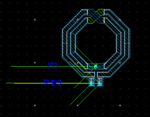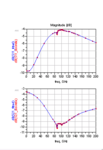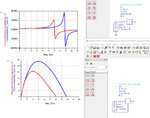jwonoh
Newbie level 5

Hello, I'm drawing and testing center-tapped inductor with ADS simulator. Center-tap will be connected to VDD.
After drawing inductor,
I assigned term 1&2 to two ends of inductor and term3 to center tap to simulate s-parameter simulation.
Setting of term impedances are defaults ( 50ohm ).
But I think I have to set impedance of term3 to 0 ohm because it will be connected to the VDD.
Do I have to set impedance of term 3 as a default? or some other value?
Thank you
After drawing inductor,
I assigned term 1&2 to two ends of inductor and term3 to center tap to simulate s-parameter simulation.
Setting of term impedances are defaults ( 50ohm ).
But I think I have to set impedance of term3 to 0 ohm because it will be connected to the VDD.
Do I have to set impedance of term 3 as a default? or some other value?
Thank you








